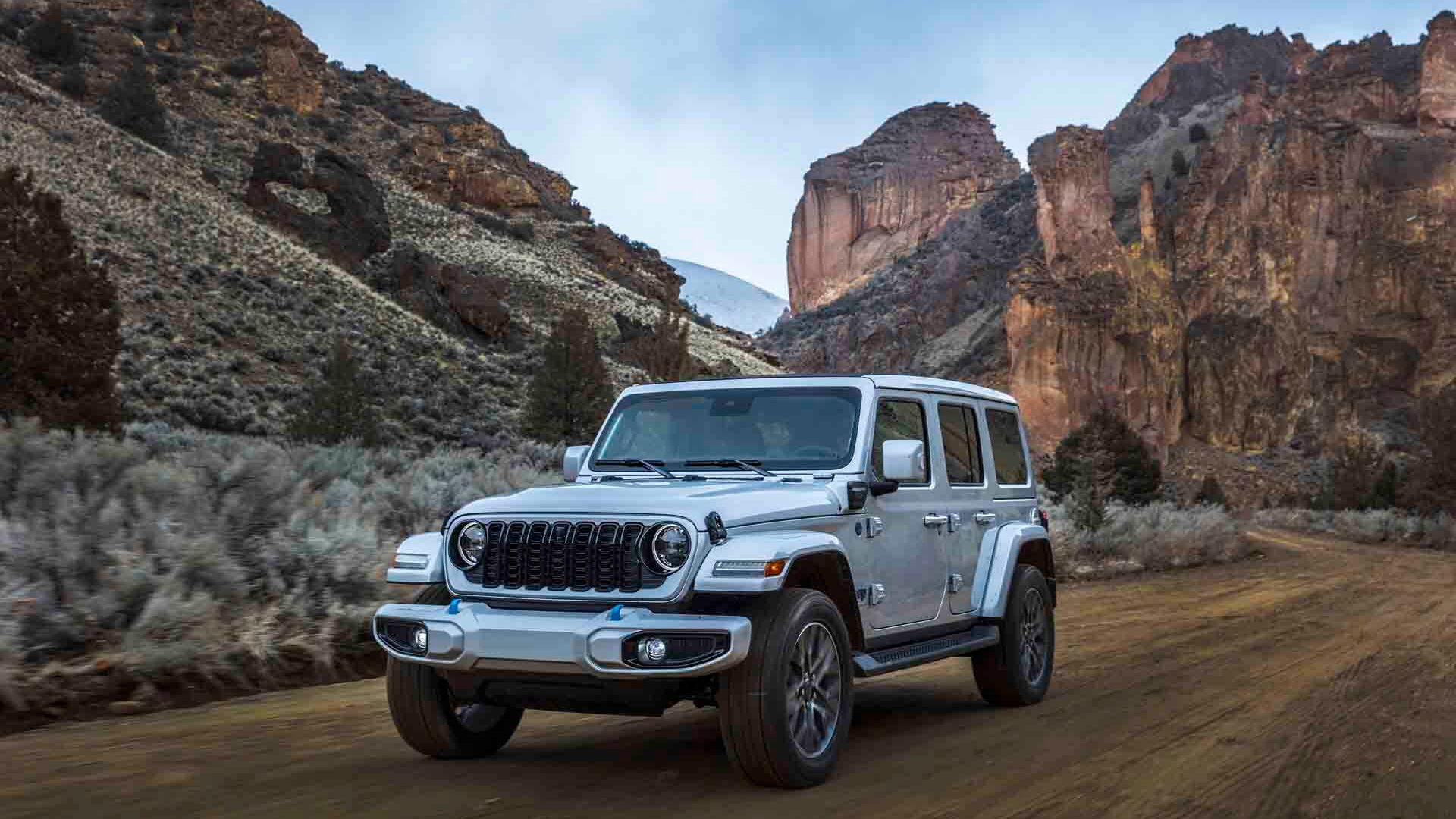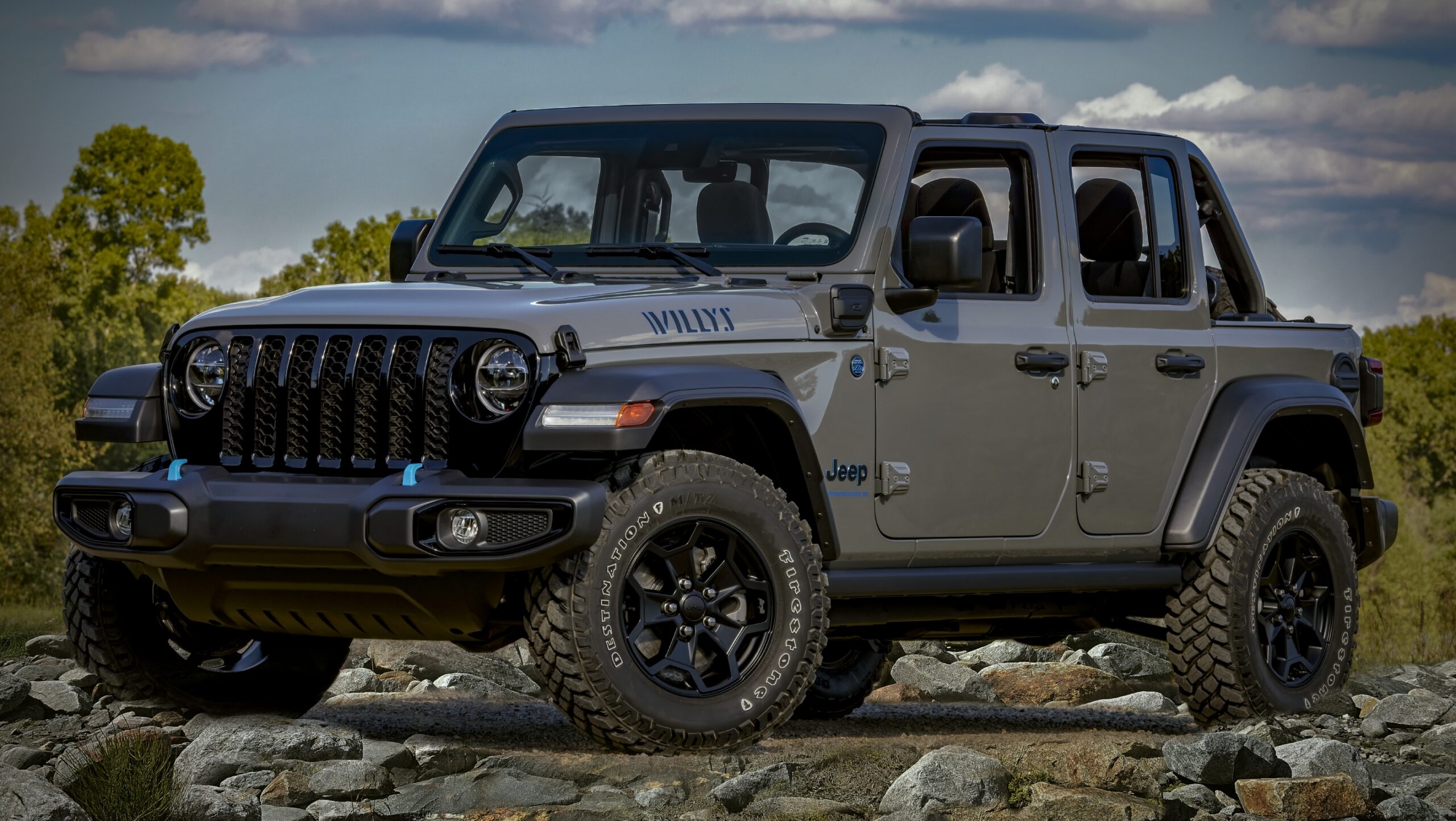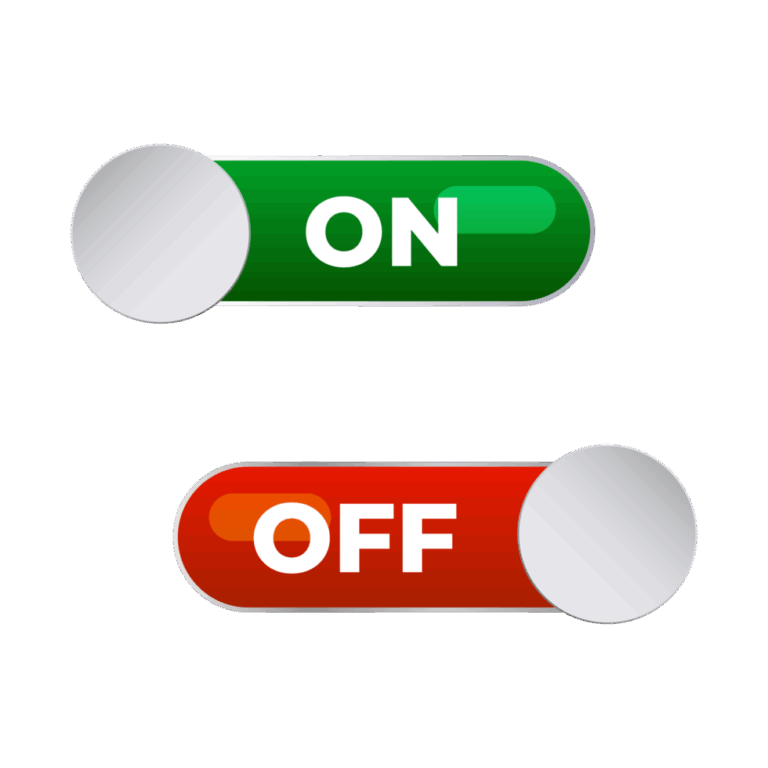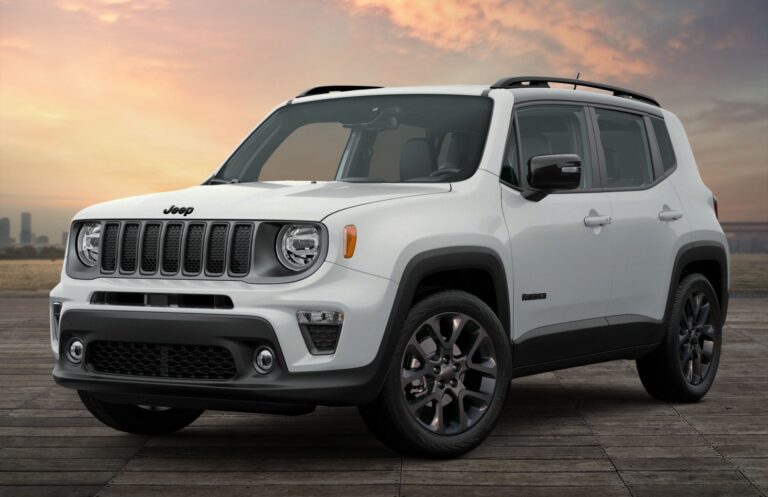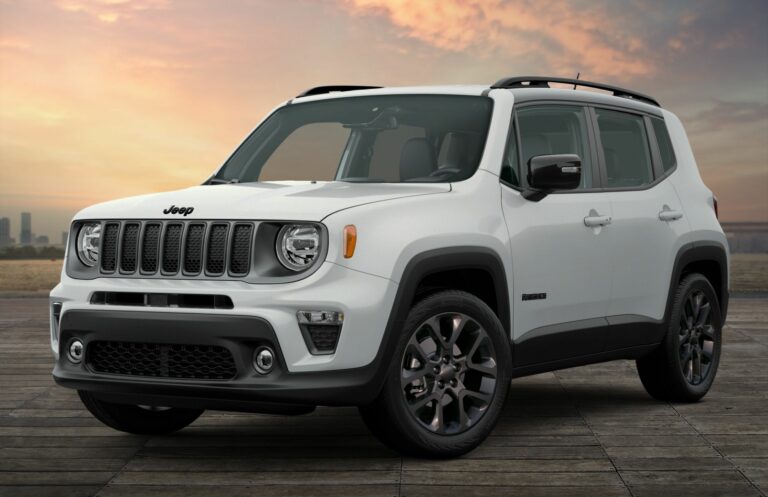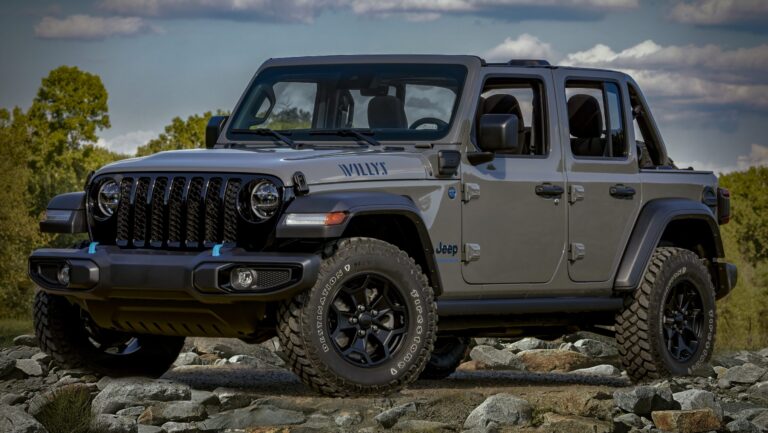Jeep SRT 1000 HP: Unleashing the Beast Within the Ultimate SUV
Jeep SRT 1000 HP: Unleashing the Beast Within the Ultimate SUV jeeps.truckstrend.com
In the realm of high-performance vehicles, few concepts ignite the imagination quite like a sport utility vehicle pushing the boundaries of supercar-level power. The "Jeep SRT 1000 HP" isn’t a factory-produced model you’ll find on a dealership lot; rather, it represents the pinnacle of aftermarket engineering and a testament to the insatiable human desire for extreme speed and power in an unexpected package. It is the culmination of meticulous modifications, advanced tuning, and a significant investment, transforming an already potent Jeep Grand Cherokee SRT or Trackhawk into a four-digit horsepower monster capable of humbling dedicated sports cars.
This article delves deep into the world of the 1000 HP Jeep SRT, exploring what it takes to achieve such a monumental feat, the thrilling performance it unlocks, and the crucial considerations for anyone contemplating such an audacious build. Prepare to understand the engineering marvels, the financial commitments, and the sheer audacity behind turning a family SUV into an asphalt-shredding behemoth.
Jeep SRT 1000 HP: Unleashing the Beast Within the Ultimate SUV
The Genesis of Power: Understanding the Base Platform
To understand a 1000 HP Jeep SRT, one must first appreciate its foundation: the Jeep Grand Cherokee SRT and, more commonly, the Grand Cherokee Trackhawk.
- Jeep Grand Cherokee SRT (2006-Present): Initially powered by naturally aspirated HEMI V8 engines (6.1L, then 6.4L), the SRT models were the original performance SUVs from Jeep. While powerful in their own right (470-475 HP), reaching 1000 HP from a naturally aspirated engine is exceedingly complex and expensive, typically requiring forced induction to be added.
- Jeep Grand Cherokee Trackhawk (2018-2021): This is the true spiritual predecessor and the most common starting point for 1000 HP builds. Equipped with the monstrous 6.2-liter supercharged Hellcat V8 engine, the Trackhawk rolls off the factory line with a staggering 707 horsepower (or 710 HP in later models). Its robust engine, transmission (ZF 8HP95), and all-wheel-drive system are designed to handle immense power, making it an ideal candidate for further enhancements. The Trackhawk’s factory supercharger, while potent, is often replaced or heavily modified to reach the 1000 HP mark.
The allure of building a 1000 HP Jeep lies in its inherent duality: the practicality and comfort of a full-size SUV combined with the raw, untamed power of a hypercar. It’s a vehicle that can ferry the family to the grocery store one moment and then launch from 0-60 mph in under 3 seconds the next.
The Path to Four-Digit Horsepower: Key Modifications
![]()
Achieving 1000 horsepower in a Jeep SRT/Trackhawk is not a simple bolt-on affair. It requires a comprehensive, integrated approach involving significant upgrades to almost every major system.
- Engine Internals Reinforcement: The factory Hellcat engine, while strong, isn’t designed for sustained 1000+ HP output. Key upgrades include:
- Forged Pistons and Connecting Rods: To withstand higher cylinder pressures and heat.
- Upgraded Crankshaft: Though the factory crank is robust, some extreme builds opt for billet units.
- Performance Camshaft: To optimize valve timing for increased airflow at higher RPMs.
- Cylinder Head Work: Porting, stronger valves, and springs for improved flow and durability.

- Forced Induction Upgrades: This is the heart of the power increase.
- Larger Supercharger: For Trackhawks, replacing the factory 2.4L IHI supercharger with a larger unit (e.g., 2.9L, 3.8L Whipple, or even custom twin-screw units) is common. This allows for significantly more boost pressure.
- Turbocharger Conversion: For the ultimate power, some builders opt to remove the supercharger entirely and install a twin-turbo setup. This offers greater efficiency at higher boost levels and massive power potential, though it’s a more complex and expensive conversion.
- Fuel System Overhaul: More air requires more fuel.
- Larger Fuel Injectors: To deliver sufficient fuel flow.
- Upgraded Fuel Pumps: Often multiple pumps or a high-flow aftermarket pump.
- Fuel Pressure Regulator and Lines: To ensure consistent fuel delivery.
- Exhaust System: A less restrictive exhaust allows the engine to breathe better, improving power and sound. Full long-tube headers and a cat-back exhaust are standard.
- Transmission Reinforcement: The ZF 8HP95 automatic transmission is robust but needs strengthening for 1000+ HP. This typically involves:
- Upgraded Clutch Packs: To handle the increased torque.
- Reinforced Input/Output Shafts: For durability.
- Performance Valve Body and Torque Converter: To improve shifting and power transfer.
- Driveline Upgrades: To transfer power to all four wheels without breaking.
- Stronger Driveshafts: Carbon fiber or chromoly units.
- Upgraded Axles: To prevent snapping under hard launches.
- Reinforced Differential: Front and rear differentials may require strengthening.
- Cooling System Enhancements: Extreme power generates extreme heat.
- Larger Heat Exchanger: For the supercharger intercooler.
- Upgraded Radiator and Auxiliary Coolers: For engine oil and transmission fluid.
- High-Flow Coolant Pump.
- ECU Tuning: This is arguably the most critical step. A custom tune recalibrates the engine control unit to account for all the new hardware, optimizing fuel delivery, ignition timing, boost pressure, and transmission shift points for maximum safe power. This often requires dyno tuning by experienced professionals.
- Brakes and Suspension: While not directly contributing to horsepower, these are vital for safety and handling the immense power.
- Big Brake Kit (BBK): Larger rotors and multi-piston calipers are essential for stopping a heavy, 1000 HP SUV.
- Performance Suspension: Lowering springs, coilovers, or even adjustable air suspension systems can improve handling and reduce body roll.
Performance Beyond Limits: What 1000 HP Means
A 1000 HP Jeep SRT is an absolute force of nature. While exact figures vary based on tuning and setup, expect:
- 0-60 mph: Sub-3.0 seconds (often in the 2.X second range), rivalling hypercars.
- Quarter-Mile: Low 10s or even high 9s, putting it in drag-strip record territory for an SUV.
- Top Speed: Limited more by aerodynamics and tire ratings, but easily exceeding 180 mph, often approaching 200 mph.
- Driving Experience: Brutal acceleration, a ferocious exhaust note, and an addictive surge of power that pins you to the seat. It transforms the comfortable SUV into a track weapon that can surprise nearly anything on the road or strip.
The Practicalities and Pitfalls: Owning a 1000 HP SRT
While exhilarating, owning and maintaining a 1000 HP Jeep SRT comes with its own set of challenges and considerations.
- Reliability and Maintenance: Pushing an engine to double its factory output inevitably impacts long-term reliability. Components are stressed more, and more frequent maintenance (oil changes, spark plugs, driveline checks) is required. Breakages can be costly.
- Fuel Consumption: Expect single-digit MPG figures, especially when driven enthusiastically. These engines are incredibly thirsty.
- Cost of Ownership: Beyond the initial modification cost, running a 1000 HP vehicle is expensive. Premium fuel, specialized maintenance, performance tires, and potential repair costs add up significantly.
- Finding a Reputable Tuner/Builder: This is paramount. An experienced and reputable shop specializing in Hellcat/SRT platforms is crucial for a successful and reliable build. Poor tuning can lead to catastrophic engine failure.
- Insurance and Legalities: Some insurance companies may be hesitant to cover heavily modified vehicles, or premiums may skyrocket. Emissions regulations can also be a concern depending on local laws, as many modifications (e.g., catalytic converter removal) are not street legal. Always check local laws regarding vehicle modifications.
- Daily Usability: While still an SUV, the extreme power and stiffened suspension can make it less comfortable for daily driving. It’s a compromise.
Practical Advice and Actionable Insights
For those dreaming of a 1000 HP Jeep SRT, here’s some actionable advice:
- Start with the Right Base: A low-mileage Grand Cherokee Trackhawk is generally the best starting point due to its robust factory powertrain.
- Budget Generously: This is not a cheap endeavor. Factor in not just the modification costs but also ongoing maintenance, fuel, and potential repairs.
- Research Tuners Thoroughly: Look for shops with a proven track record, positive reviews, and expertise specifically with Hellcat/SRT platforms. Ask for references and examples of their work.
- Define Your Goals: Do you want a street beast, a drag monster, or something that can do both? This will influence the specific modifications needed.
- Understand the Compromises: Be prepared for increased noise, harsher ride quality, frequent fuel stops, and the potential for higher maintenance.
- Drive Responsibly: 1000 HP is an immense amount of power. It demands respect and responsible driving, especially on public roads.
Estimated Cost of a 1000 HP Jeep SRT Build
As "Jeep SRT 1000 HP" is a custom build, there is no fixed price. The cost involves the base vehicle and the extensive modifications. Prices can vary wildly based on parts quality, labor rates, and the specific shop. This table provides an estimated range for a full 1000 HP build, assuming a Grand Cherokee Trackhawk as the base.
| Component/Service | Estimated Cost (USD) | Notes |
|---|---|---|
| Base Vehicle (Used Trackhawk) | $60,000 – $90,000+ | Varies significantly by year, mileage, and condition. |
| Engine Internal Upgrades | $8,000 – $15,000 | Forged pistons, rods, upgraded valvetrain. |
| Supercharger Upgrade (or Turbo Conversion) | $10,000 – $30,000+ | Larger supercharger unit, associated hardware. Twin-turbo conversion is on the higher end. |
| Fuel System Overhaul | $3,000 – $7,000 | Injectors, pumps, lines, regulator. |
| Transmission Reinforcement | $5,000 – $12,000 | Upgraded clutches, shafts, torque converter. |
| Driveline Upgrades | $4,000 – $10,000 | Driveshafts, axles, differential reinforcement. |
| Cooling System Enhancements | $2,000 – $5,000 | Larger heat exchanger, auxiliary coolers. |
| Exhaust System | $2,000 – $6,000 | Long-tube headers, high-flow catalytic converters (if desired), cat-back. |
| ECU Custom Tuning | $2,000 – $5,000 | Crucial for optimizing performance and reliability. Often includes dyno time. |
| Brake System Upgrade | $3,000 – $8,000 | Larger rotors, performance calipers (e.g., Brembo). |
| Suspension Upgrades | $1,500 – $5,000 | Lowering springs, performance shocks, or coilovers. |
| Miscellaneous Parts & Labor | $5,000 – $15,000+ | Hoses, clamps, sensors, fluids, shop labor for installation of all components, unexpected issues. |
| Total Estimated Modification Cost | $40,500 – $113,000+ | This is on top of the base vehicle cost. |
| Total Estimated Investment (Vehicle + Mods) | $100,500 – $203,000+ | This range reflects the highly variable nature of custom builds. |
Frequently Asked Questions (FAQ) about the 1000 HP Jeep SRT
Q1: Is a 1000 HP Jeep SRT reliable?
A1: Relative to a factory vehicle, no. While a well-built 1000 HP Jeep by a reputable tuner can be surprisingly robust for its power level, it will require more frequent maintenance, careful driving, and components will be under significantly higher stress than stock, leading to a higher likelihood of component wear or failure over time.
Q2: Can I daily drive a 1000 HP Jeep SRT?
A2: Yes, it’s possible, but it comes with compromises. The ride might be stiffer, fuel economy will be very poor, and the sheer power can be overwhelming in traffic. It’s often more suited as a weekend toy or occasional drag strip vehicle.
Q3: How much does it cost to maintain a 1000 HP Jeep SRT?
A3: Maintenance costs are significantly higher than a stock vehicle. Expect more frequent oil changes with premium synthetic oils, specialized fluid changes, and potential replacement of high-stress components. Tires will also wear out much faster due to the power.
Q4: Is it legal to own a 1000 HP Jeep SRT?
A4: Owning such a vehicle is generally legal, but certain modifications (like catalytic converter removal) may not be street legal in your region due to emissions regulations. Always check local laws and ensure your vehicle complies with safety and emissions standards. Insurance can also be a challenge.
Q5: How long does it take to build a 1000 HP Jeep SRT?
A5: The build time varies greatly depending on the shop’s schedule, availability of parts, and complexity of the modifications. It can range from several weeks to several months for a comprehensive build.
Q6: What’s the biggest challenge in building a 1000 HP Jeep SRT?
A6: The biggest challenge is often finding a highly skilled and reputable tuner/shop capable of integrating all the complex modifications and, most importantly, precisely tuning the engine and transmission for optimal performance and reliability without overstressing components.
Conclusion
The "Jeep SRT 1000 HP" is more than just a vehicle; it’s a statement. It represents the pinnacle of performance SUV tuning, blending the practicality of a Grand Cherokee with the raw, exhilarating power of a supercar. While the journey to 1000 horsepower is expensive, demanding, and requires careful consideration of reliability and maintenance, the result is an automotive marvel that defies expectations. For those who dare to dream beyond factory limits, the 1000 HP Jeep SRT offers an unparalleled, adrenaline-fueled experience that few vehicles, regardless of segment, can match. It’s a testament to engineering ingenuity and the enduring appeal of truly extreme performance.
